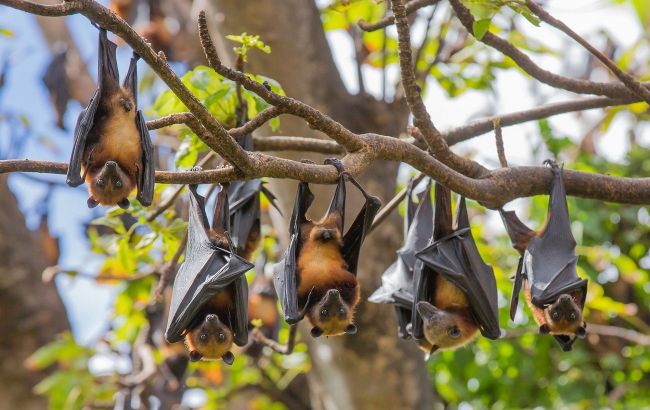5 amazing facts about bats
 Amazing facts about bats (photo: GettyImages)
Amazing facts about bats (photo: GettyImages)
Bats are among the most mysterious and extraordinary creatures of the night. From their incredible speed to their unique sense of hearing, these animals possess amazing traits.
Bats detect plants using echolocation
Many bats survive by eating fruit, yet they still hunt only at night. How do they find food in the dark? Scientists once thought that they navigated using their noses, believing it was difficult to distinguish shapes among leaves using echolocation.
Glossophagine bats can locate their favorite plants using only sound. Scientists don’t fully understand how they do it, as echoes from plants are very complex signals, reflecting off numerous leaves. However, glossophagine bats manage this with ease.
Some plants have leaves shaped like satellite dishes specifically designed to attract bats. This suggests there is still much to learn about the capabilities of sound.
High frequencies
The sounds made by bats can reach extremely high frequencies. The human ear hears sounds in the range of 20 Hz to 20 kHz, which is considered quite good. In comparison, the best soprano can reach a note of around 1.76 kHz. Most bats can produce sounds ranging from 12 to 160 kHz, making them similar to dolphins.
However, the clear-winged woolly bat produces the highest sounds among all known animals. Its frequency range starts at 235 kHz and reaches up to 250 kHz, which is 120 times higher than the highest sound a top soprano can produce.
Scientists believe these high frequencies help bats focus their ultrasonic signals, making them very precise. This is especially useful in dense jungles, where such a capability allows them to effectively locate insects among leaves and vegetation.
Super ears
Bats’ ears are usually not given much attention, but their ability to change shape is remarkable. Engineers from Virginia Tech have found that bats can alter the shape of their ears in one-tenth of a second (100 milliseconds). This is faster than it takes for humans to blink.
Bats’ ears function like super-antennas. They can not only change shape quickly but also process echo signals with an interval of just 2 microseconds, distinguishing objects that are only 0.3 millimeters apart. For comparison, 0.3 millimeters is the width of a human hair.
It’s no wonder that navies are studying bats, as their natural biological echolocation equipment far surpasses any human technology.
How bats find their friends
Like humans, bats have friends. When hundreds of bats in a colony prepare to sleep, they always gather in the same social group. How do they find each other in such large numbers?
Bats use their unique calls to recognize one another. Each bat has a distinct sound that helps others identify it among others. This unique call can be compared to a name and is often used as a greeting. When friends meet, they also sniff each other’s armpits, which helps them identify one another.
Additionally, when bats hunt for food, they use special sounds to indicate which prey belongs to them. These sounds are also unique to each bat. So, when one emits a sound that means “This is mine!”, other bats know who is saying it.
The fastest mouth in the world
There are ordinary muscles, and then there are super muscles. In pit vipers, tail muscles work at incredible speeds, while in toadfish, swim bladder muscles are the fastest among vertebrates.
However, among mammals, the fastest muscles are in the bat’s larynx. They can contract up to 200 times per second - 100 times faster than we blink. Each contraction is accompanied by a sound.
Scientists have been curious about the maximum sonar rate that flying bats can handle. Since echoes return to the bat in just one millisecond, their sounds begin to overlap at 400 echoes per second. Studies show that bats can hear up to 400 echoes per second, and the only limiter to their speed is their larynx.
There may be bats that could set a new record. No other mammal has muscles moving at such speeds. This is possible because bat muscle cells contain more mitochondria and calcium-transporting proteins, providing more energy and allowing the muscles to contract more frequently. Their muscles are literally brimming with energy.

